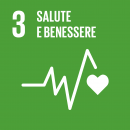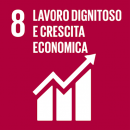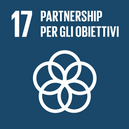Frigerio, L. Assessing affordable debt sustainability in Sub Saharan Africa: the geometry of debt sustainability approach.
- 02, 27, 2021
Luca Frigerio
Assessing affordable debt sustainability in Sub Saharan Africa: the geometry of debt sustainability approach.
Rel. Giovanni Vaggi, Michela Magliacani. Università degli Studi di Pavia, Dipartimento di Scienze Economiche e Aziendali, Corso di Laurea magistrale in Economics Finance and International Integration, A.A. 2019/2020.




Abstract
Despite the successful debt relief initiatives on the turn of the century, the external debt in Africa is rising again because of new worrying features. In this work we analysed the recent debt dynamic in the Sub-Saharan Africa region, and what emerges is that the diminishing concessionality, the expanding private component and a strong presence of opaque Chinese loans are leading many SSA countries to the edge of insolvency, an insolvency that could become unavoidable when the region is hit by a global crisis like the COVID-19 pandemic. Also, as long as Sub-Saharan countries have to devote a relevant portion of their fiscal resources to the service of the debt, it would be impossible to enhance the public spending for development to properly achieve the SDGs in few years. Hence what these countries need, is not just to achieve debt sustainability, but also, they should be able to free enough resources for affordable levels of additional expenditures. Aware of these issues, we evaluated external debt sustainability before COVID-19 in five selected SSA countries: Cote D’Ivoire, Ethiopia, Ghana, Kenya, and Zambia. Despite being a quite obvious concept, debt sustainability entails some difficult implications that deny the possibility to have just one universal methodology for its assessment. We decided to adopt the Geometry of Debt Sustainability (GDS) framework by Vaggi and Prizzon (2014), a model that account for the structural aspect of debt sustainability (the non-interest current account) that is closely interlinked with sustainability from a ‘financial’ point of view (Interest and growth rate relationship). Moreover, to the basic GDS model we implemented two new features: first, we introduced a Human Development factor, by observing how debt sustainability changes if these countries should improve to an appropriate level their spending for development; second, we considered external debt thresholds, levels of debt after which insolvency becomes very likely. The results of our analysis reveal coherence with the country judgement of the debt sustainability analysis (DSA) performed by IMF and WB: except Cote D’Ivoire, all these countries are following a debt dynamic with high risk of debt distress. Zambia, in particular, already shows signals of the default that effectively happened in November 2020.
Parole chiave
Sostenibilità del Debito, Africa Sub-Sahariana, Obiettivi di Sviluppo Sostenibile.
